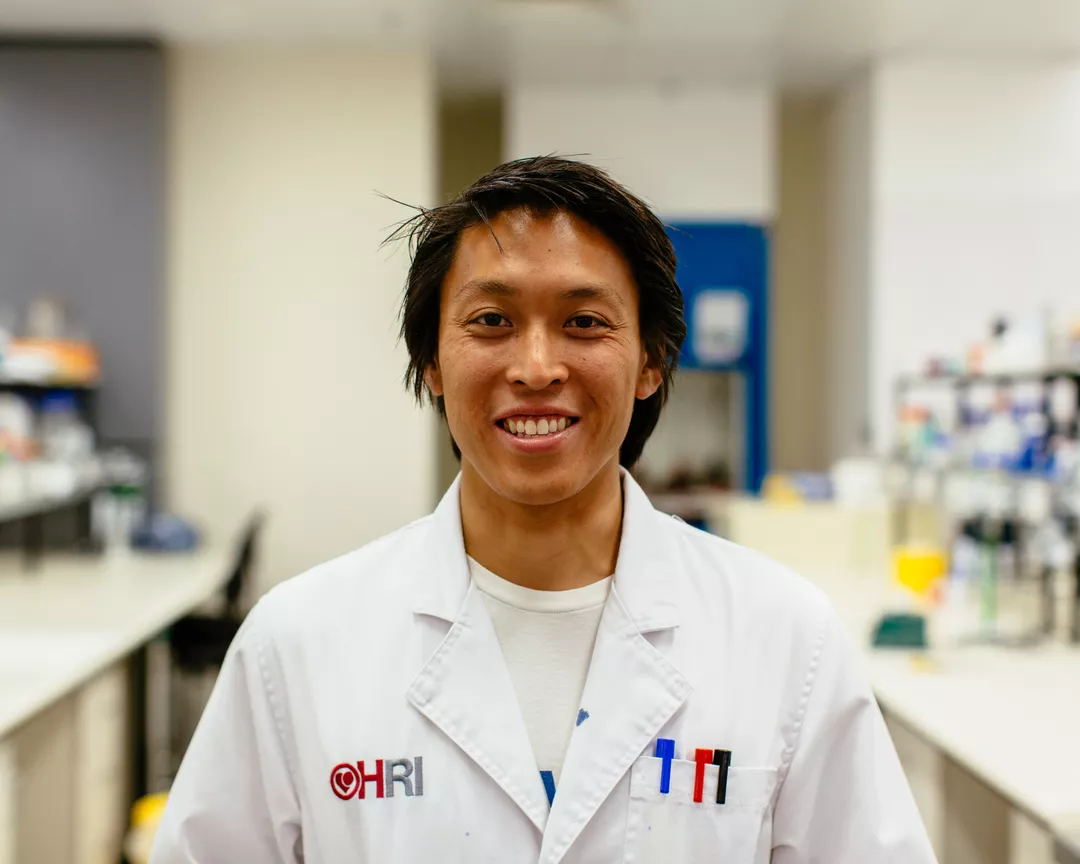A young Sydney scientist has invented a body patch that breathes life into dead tissue following a stroke or heart attack, dramatically improving a patient’s chance of full recovery.
The Heart Research Institute (HRI) is behind the invention of an innovative bio-material patch that can be loaded with a patient’s stem cells and implanted on their damaged tissue to stimulate blood flow. The findings have been published in the journal Stem Cell Research & Therapy.
“In lab studies we’ve been able to show that stem cells grown on our specialist patch were able to live longer and do life-saving work when grafted onto dying tissue,” says Richard Tan, a PhD candidate in HRI’s Applied Materials Group led by Dr Steven Wise.
Heart disease, stroke and vascular conditions are a major cause of death and disability in Australia, affecting about 4.2 million people, according to AIHW statistics. In these conditions, known broadly as cardiovascular disease, the blood vessels are damaged, blocking vital blood supply to tissue. In the event of a stroke or heart attack, urgent action is needed to restore blood flow to save lives and minimise disability. However, effective therapies to do this are sadly lacking.
Stem cells – cells that can transform into any type of cell in the body – hold great promise in the treatment of heart failure and heart disease. However, stem cell therapies to date have been limited by the failure of injected cells to firmly graft onto damaged tissue following transplantation. “Stem cells have actually been used to treat heart attacks but cells don’t survive for long so effects are short-lived,” Mr Tan explains.
“If these results bear out in human trials then we have a hugely exciting new stem cell therapy that will transform the treatment landscape for stroke and heart attacks.”
As an alternative to injected cells, scientists at HRI have been investigating growing the cells on a compatible bio-material patch which is then implanted in the body. They used endothelial stem cells, which are known to stimulate blood vessel growth and wound healing naturally in the human body.
Microscope image of bio-material patch seeded with stem cells. Red stain indicates stem cell wall; blue indicates cell nucleus. Taken by Richard Tan, HRI Applied Materials Group.
The findings bring new hope that effective stem cell therapy could soon reach the patient’s bedside. “Stem cell research has been around for over two decades but the main challenges have been to produce translational therapies for widespread use because these cells engraft poorly following transplantation,” Mr Tan says.
“Results like ours help overcome these translational challenges and unlock the tissue regenerative potential behind stem cells for the treatment of practically any disease in the human body.”
The patch will undergo further lab studies before it will be trialled in humans. “This is really promising new research,” the researcher says. “If the patch proves effective outside the lab, it can potentially solve engraftment issues for a wide range of stem cells that are currently being trialled for many debilitating diseases.
“And for people who suffer a stroke or heart attack, you’ll have an effective new therapy that can literally reverse the damage caused by these devastating conditions.”




